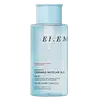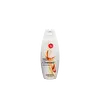What's inside
What's inside
 Key Ingredients
Key Ingredients

 Benefits
Benefits

 Concerns
Concerns

 Ingredients Side-by-side
Ingredients Side-by-side

Water
Skin ConditioningPEG-6 Caprylic/Capric Glycerides
EmulsifyingHexylene Glycol
EmulsifyingPEG-7 Glyceryl Cocoate
EmulsifyingPoloxamer 184
EmulsifyingDisodium Cocoamphodiacetate
CleansingDecyl Glucoside
CleansingGlycerin
HumectantCeramide NP
Skin ConditioningSalicylic Acid
MaskingCeramide AP
Skin ConditioningCeramide As
Skin ConditioningCeramide Ng
Skin ConditioningGlycolic Acid
BufferingPropanediol
SolventSodium PCA
HumectantMel
EmollientUrea
BufferingFructose
HumectantGlucose
HumectantCaprylic/Capric Triglyceride
MaskingCentella Asiatica Extract
CleansingSodium Hyaluronate
HumectantPotassium Hyaluronate
Skin ConditioningSodium Hyaluronate Crosspolymer
HumectantSodium Acetylated Hyaluronate
HumectantHydroxypropyltrimonium Hyaluronate
Hydrolyzed Hyaluronic Acid
HumectantHyaluronic Acid
HumectantHydrolyzed Sodium Hyaluronate
Skin ConditioningHydrogenated Lecithin
EmulsifyingPentylene Glycol
Skin ConditioningCitric Acid
BufferingGlycine
BufferingAcetyl Glucosamine
Skin ConditioningGlucuronolactone
Skin ConditioningLidocaine Hcl
1,2-Hexanediol
Skin ConditioningPolygonum Cuspidatum Root Extract
AntioxidantScutellaria Baicalensis Root Extract
AstringentCamellia Sinensis Leaf Extract
AntimicrobialGlycyrrhiza Glabra Root Extract
BleachingSucrose Stearate
EmollientPropylene Glycol
HumectantChamomilla Recutita Flower Extract
MaskingRosmarinus Officinalis Leaf Extract
AntimicrobialEthylhexylglycerin
Skin ConditioningHydrolyzed Collagen
EmollientCaprylyl Glycol
EmollientTropolone
Skin ConditioningGlycosphingolipids
EmollientTetrasodium EDTA
Cetrimonium Chloride
AntimicrobialSodium Chloride
MaskingSodium Glycolate
BufferingWater, PEG-6 Caprylic/Capric Glycerides, Hexylene Glycol, PEG-7 Glyceryl Cocoate, Poloxamer 184, Disodium Cocoamphodiacetate, Decyl Glucoside, Glycerin, Ceramide NP, Salicylic Acid, Ceramide AP, Ceramide As, Ceramide Ng, Glycolic Acid, Propanediol, Sodium PCA, Mel, Urea, Fructose, Glucose, Caprylic/Capric Triglyceride, Centella Asiatica Extract, Sodium Hyaluronate, Potassium Hyaluronate, Sodium Hyaluronate Crosspolymer, Sodium Acetylated Hyaluronate, Hydroxypropyltrimonium Hyaluronate, Hydrolyzed Hyaluronic Acid, Hyaluronic Acid, Hydrolyzed Sodium Hyaluronate, Hydrogenated Lecithin, Pentylene Glycol, Citric Acid, Glycine, Acetyl Glucosamine, Glucuronolactone, Lidocaine Hcl, 1,2-Hexanediol, Polygonum Cuspidatum Root Extract, Scutellaria Baicalensis Root Extract, Camellia Sinensis Leaf Extract, Glycyrrhiza Glabra Root Extract, Sucrose Stearate, Propylene Glycol, Chamomilla Recutita Flower Extract, Rosmarinus Officinalis Leaf Extract, Ethylhexylglycerin, Hydrolyzed Collagen, Caprylyl Glycol, Tropolone, Glycosphingolipids, Tetrasodium EDTA, Cetrimonium Chloride, Sodium Chloride, Sodium Glycolate
 Reviews
Reviews

Ingredients Explained
These ingredients are found in both products.
Ingredients higher up in an ingredient list are typically present in a larger amount.
Citric Acid is an alpha hydroxy acid (AHA) naturally found in citrus fruits like oranges, lemons, and limes.
Like other AHAs, citric acid can exfoliate skin by breaking down the bonds that hold dead skin cells together. This helps reveal smoother and brighter skin underneath.
However, this exfoliating effect only happens at high concentrations (20%) which can be hard to find in cosmetic products.
Due to this, citric acid is usually included in small amounts as a pH adjuster. This helps keep products slightly more acidic and compatible with skin's natural pH.
In skincare formulas, citric acid can:
While it can provide some skin benefits, research shows lactic acid and glycolic acid are generally more effective and less irritating exfoliants.
Most citric acid used in skincare today is made by fermenting sugars (usually from molasses). This synthetic version is identical to the natural citrus form but easier to stabilize and use in formulations.
Read more about some other popular AHA's here:
Learn more about Citric AcidPropylene Glycol is an odorless, colorless liquid. As a humectant, it helps skin retain moisture. It also aids in delivering active ingredients.
Another role of this ingredient is preventing a product from melting or freezing. Propylene glycol also adds antimicrobrial properties to a product, elongating product lifespan.
This ingredient is considered an organic alcohol and commonly added into both cosmetics and foods.
Those with sensitive skin or conditions may develop a rash when using this ingredient.
Learn more about Propylene GlycolWater. It's the most common cosmetic ingredient of all. You'll usually see it at the top of ingredient lists, meaning that it makes up the largest part of the product.
So why is it so popular? Water most often acts as a solvent - this means that it helps dissolve other ingredients into the formulation.
You'll also recognize water as that liquid we all need to stay alive. If you see this, drink a glass of water. Stay hydrated!
Learn more about Water